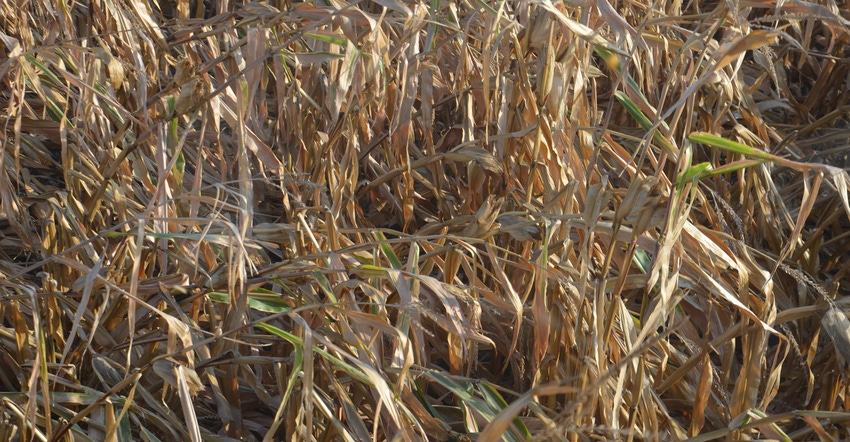December 7, 2020

In mid-August, Iowa was hit with a devastating thunderstorm. This frontal thunderstorm produced straight-line winds in front of it. The straight-line winds formed a derecho, and it was massive. The agriculture industry was ill-prepared for a derecho that was this extensive.
Indiana State Climatologist Beth Hall breaks down what causes different types of storms. A frontal storm forms where there is a strong contrast between warm, humid air and cold, drier air. The more contrast, the bigger the storm. The timing and location of each storm is determined by a jet stream.
Jet streams are strong, upper-atmospheric rivers of faster-flowing winds that vary in pattern because the Earth’s atmosphere has no “edge” to control them. Because of this, weeks, months and even years have varying weather patterns, Hall says. Year-to-year activity is also influenced by rising ocean temperatures and climate change.
Warmer ocean temperatures mean more humid air will form over the ocean and eventually make its way to land. The clash of drastic temperatures is the reason for the massive thunderstorm that produced the derecho in August. The damage was still evident months later at harvest.
All these varying weather factors contribute to varying profits for farmers. Michael Langemeier, Purdue University Extension agricultural economist, notes that the storm had a positive impact on corn and soybean prices.
According to USDA’s November crop report, 90,978,000 acres of corn were planted, and 82,289,000 acres were harvested. The average U.S. yield is estimated at 175.8 bushels per acre, up from 168 bushels in 2019.
In Iowa, due to the derecho, 13,700,000 acres of corn were planted, and only 12,700,000 were harvested.
USDA reported that 83,105,000 acres of soybeans were planted and 82,289,000 acres were harvested. Average U.S. yield is estimated at 50.7 bushels per acre, up from 47.4 bushels in 2019. The derecho didn’t seem to affect soybean yield, experts say.
Yield impact
The derecho swept through some of the most valuable cropland in the world. Iowa yields came in below trend because of the storm, but other states made up for it with above-average trend yields. Indiana crops became more valuable at Iowa’s expense.
“Damages from severe storms are seen at harvest season,” says Richard Whitlow, a self-employed commodities trader dealing with global market prices.
Whitlow’s numbers are constantly fluctuating, so he must stay on top of them. At first, he did not notice a huge effect on numbers after the derecho.
“Changes were not super noticeable after the storm,” Whitlow says, but he adds, “My numbers around harvest season did appear to change.” The derecho was significant in affecting bushel prices, even for people who focus on global market prices, such as Whitlow.
For example, corn was $3.20 per bushel in April. The futures price reported in October, harvest season, was $4.28. The over 30% difference affects farm profits by thousands of dollars. However, Langemeier notes that many other factors besides the derecho influenced the price change.
Like Hall said, weather patterns vary from year to year. The derecho that hit Iowa hardest was significant. Other farmers in neighboring states made up for lost corn yield potential in Iowa, and maybe even benefited slightly from higher prices.
Whitlow is a senior in ag communication at Purdue University. Richard Whitlow is the author’s father.
Read more about:
DerechoYou May Also Like




